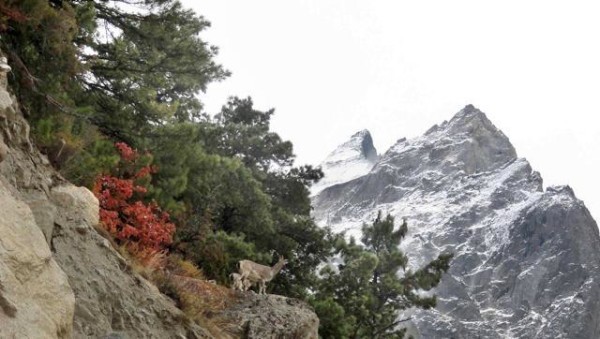
The spectacular Nelong Valley – a cold desert like area – tucked in the Uttarakhand Himalayas, close to the Indo-China border, was opened to tourists earlier this year after 53 years of remaining out of bounds post the 1962 War. While the state government opened it with much enthusiasm in May, it failed to promote the destination as a result less than 200 tourists visited the valley in the last six months.
The valley, which has a similar landscape as that of Ladakh, is not only rich in natural beauty but also houses remnants of the treacherous Indo-China trade route – like a hand-built wooden bridge – that was used for centuries by the locals prior to the war.
About Nelong Valley
The valley, situated at an altitude of around 11,000 feet above the sea level, falls under the Gangotri National Park in Uttarkashi district, is around 315 km from Dehradun. It is also only 23 kms away from Bhaironghati, a place just eight kms ahead of the famous Gangotri shrine.
Regulated tourism
The government has put a cap on the number of vehicles entering the valley per day, which is maximum six with only four occupants in each. A permit letter from the sub-divisional magistrate is required to visit the area while entry of foreigners is banned. Though the government had opened the destination with high hopes, only 184 tourists visited the valley in six months.
Potential of Nelong Valley as a tourism hotspot
Experts say the picturesque valley holds a tremendous potential to be developed into a niche tourism destination, just like the world-famed Valley of Flowers in Chamoli district of Uttarakhand that attracts thousands of tourists and nature enthusiasts every year.
Retired senior bureaucrat SS Pangtey, considered an authority in Uttarakhand tourism, says the region is an untapped asset of natural splendor that could turn into a major attraction for domestic tourists if publicized properly.
Manoj Jagudi an engineering graduate visiting the valley said, “This place is like a hidden treasure in the Himalayas but little is known about it outside the state.”
Entry to this restricted area perched close to the China border had remained forbidden for civilians after the 1962 war. The arid region was thrown open in May and closed for the season in November.
It is a remote, virgin area which has a huge potential to become an adventure tourism hotspot if only the state is able to publicise it amply,” Pangtey says.
He said regulated tourism (to prevent disturbance to local ecology) is alright “but even that will happen only when they get to know about the valley in the first place”.

Arun Puri, an Uttarkashi-based tour operator, says that the “permit process should be simplified and a single window information system should be put in place in the state capital to facilitate tourists”.
It is a remote, virgin area which has a huge potential to become an adventure tourism hotspot if only the state is able to publicise it amply,” Pangtey says.
He said regulated tourism (to prevent disturbance to local ecology) is alright “but even that will happen only when they get to know about the valley in the first place”.
Arun Puri, an Uttarkashi-based tour operator, says that the “permit process should be simplified and a single window information system should be put in place in the state capital to facilitate tourists”.



Leave a reply